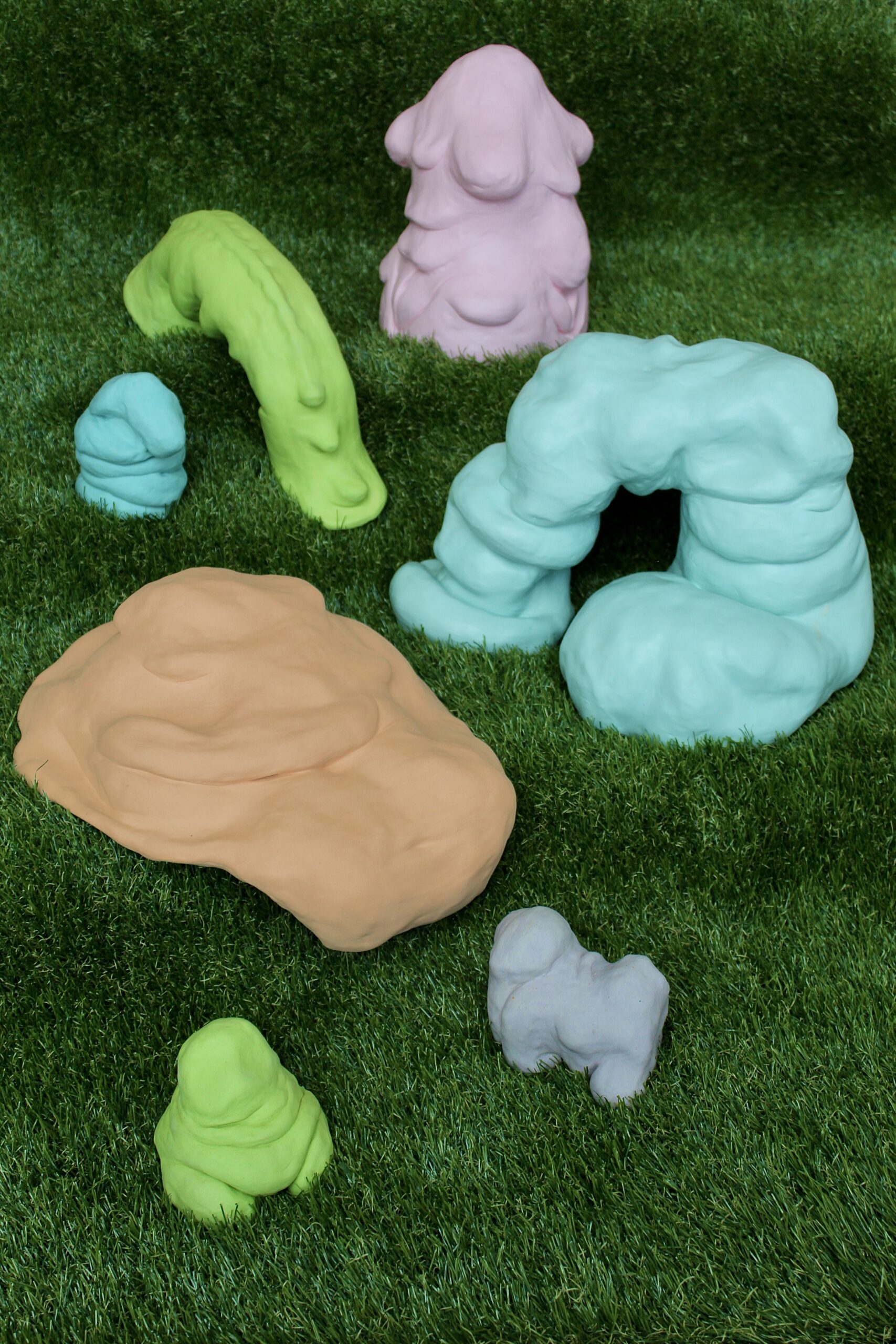Artist Biography
With a body positivity movement in full swing, I see today’s society having a consistent fight between beauty standards. Mass media has engraved in our brains at a young age, no matter what our birth date, what the perfect woman looks like. The understanding that not every person who identifies female is, can be, and will ever be the idealized woman is what body positivity movement is all about. Our bodies are proof of our journeys and stories. Every mark, scar, rib, and roll is uniquely us whether we were born with it or it has joined us over time. As someone who has always struggled with body image, I’ve always noticed art depicting the struggle. I wanted to create art that showcases the beauty of the body — of being alive and being a woman. This series “Garden of Womanly Delights” promotes body positivity by using the parts of the female body that are constantly scrutinized such as rolls, breasts, cracks, slits, ribs, etcetera. Clay is used to sculpting parts of the body in an abstract way. Bright colors are used to accentuate the forms and add additional intrigue to the figure. Colors were selected randomly based on the figure’s shape, and what I thought would suit it. The forms created by female body parts challenge the ideas of beauty and the idealized woman. These nine clay figures provide me with the image I wish I had grown up knowing is beautiful.
Thesis Abstract
Society has imposed physical standards on women for centuries, from neoclassicism sculptures to Renaissance paintings to the modern-day fashion industry, art has played a large role in this manipulation. Feminist and body positivity movements have made their way into shaping and rewriting the history of the female body as a subject in art. Through arts-based research, this thesis examined the role art and society have played in influencing and changing the body standards of women and provides a personal commentary on society’s standards of beauty in art. The thesis included two phases: experimental and final in order to test methods of building the figure in clay. As a result, 20 figures were created using clay and underglaze, nine of which entered the final exhibition of work. Limitations, future directions, and conclusions helped to examine art and society’s perspective on the female body.

